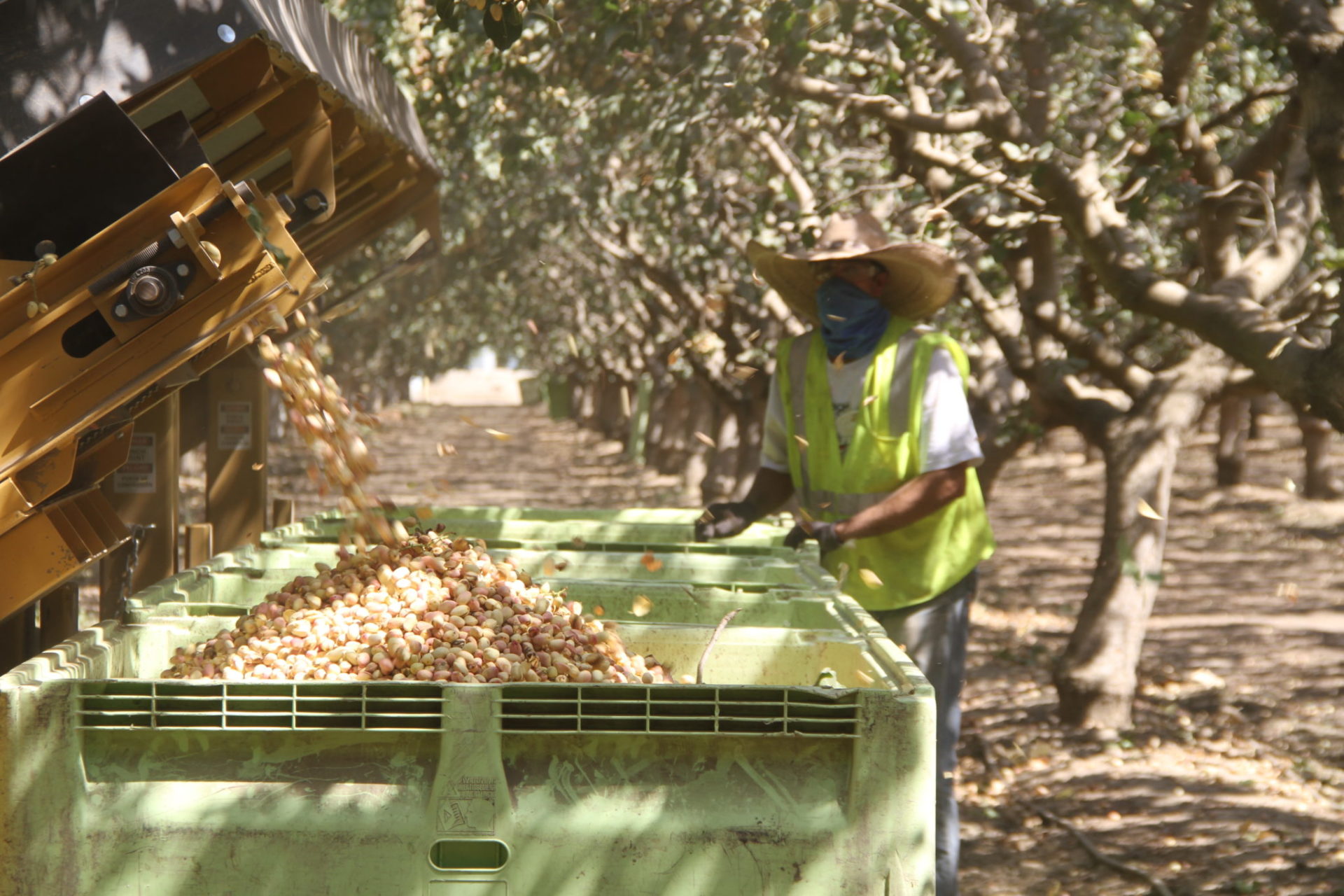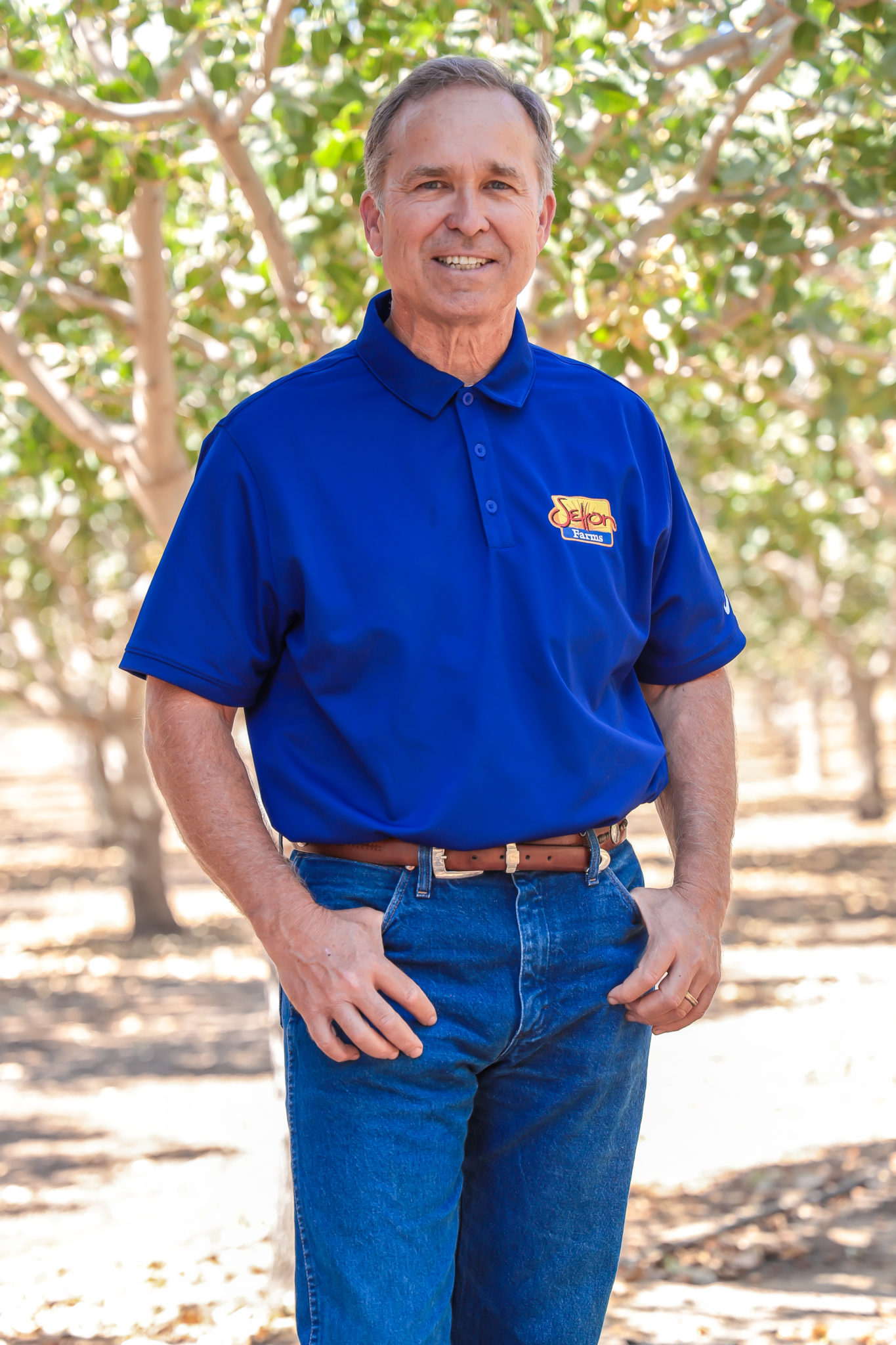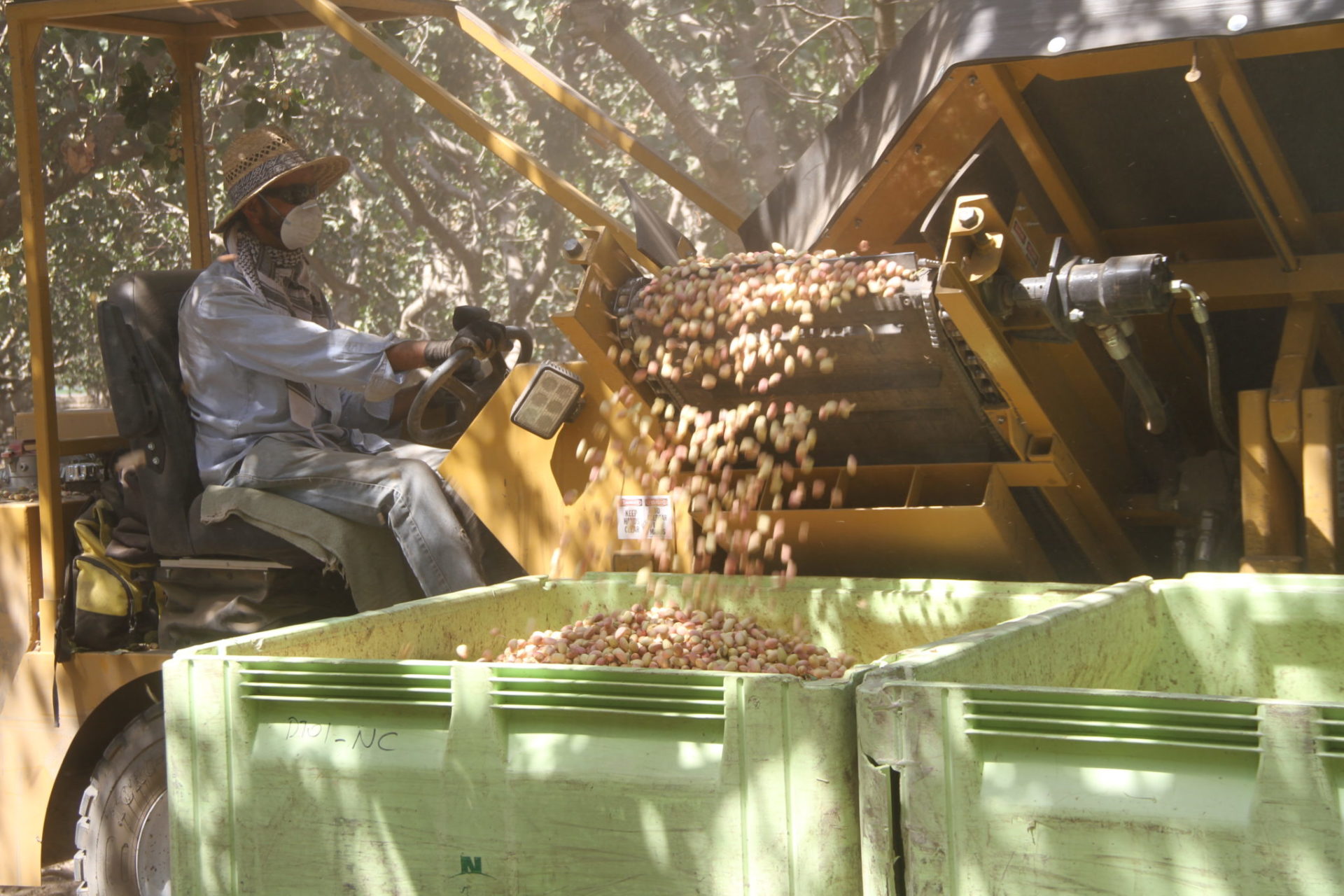
For Brian Watte of Brian Watte Farms in Fresno, season-ending crop management in pistachios boils down to three keys: “Just keep the bugs off and keep the water going and get it dried up immediately before we shake,” Watte said.
With their eyes on a billion-pound pistachio crop, California growers, a processor and an extension specialist, recently shared with West Coast Nut Magazine some keys to getting the most of this year’s bounty.
Keeping the water running was one constant.
“Unlike in almonds, with pistachios you can put on your water right up until the day you have to stop to get your field ready for equipment,” said Rich Kreps, a Madera grower. “So, you can keep that water running, which keeps your profile filled, so you are ready to go with your postharvest nutrition right after you get your nuts off.”
Plan Early for Harvest and Hauling
Getting harvesters to farms in a timely fashion is another key that came up. The best way to do that, according to sources, is to plan ahead and treat them well.
“We have a very good relationship with our harvest guy,” Watte said. “We helped our guy get into the business several years ago, and he takes good care of us because of that. Beyond that, though, generally if you come across a good harvest guy, treat him right, make sure your field is in good shape so he is not out there driving over squirrel holes and all that, where it is hard on his equipment, and pay him on time, and you’ll get him back every year.
“Same thing with truck lines,” Watte continued. “If you don’t jump around and change, if you treat them right, put a little water on your roads once in a while, and you pay them on time, you build relationships. And it is important, especially when you come up on a year like we are now, with a billion-pound crop, and the harvest guys are going to be stretched and the trucks are going to be stretched.
“If you have been with the same crew for several years and have those good relations, you should get good service,” Watte said. “In most businesses, relationships are important, especially in this nut deal.”
UCCE pomologist Louise Ferguson noted that it is important to start coordinating with harvesters early on. “It is never too early to start working with your contract harvester,” Ferguson said.
Kreps agreed. “Especially if you are a small grower like myself, at 40 acre, you want to line that up early to make sure that when the equipment is coming into your area, your harvest is ready and you’ve got someone lined up so you don’t get pushed on the back burner and lose all the early nuts.
“If you are waiting in line, every day that you are delayed you run the risk of having more insect damage,” Kreps noted.

Late-Season NOW Control
Annually, the biggest crop management issue for pistachio growers in the days leading up to harvest, according to sources, centers around the navel orangeworm (NOW.)
“Because the infestation is so devastating, from the point of view of aflatoxin contamination and from the point of view of consumer distaste and from the point of view that they are very difficult to sort out, navel orangeworm is the biggest problem in the industry,” Ferguson said.
The availability of NOW insecticides with an array of preharvest intervals, including some as short as two days, has made late-season control more conducive to harvest operations, according to growers. Good off-season practices can also help ensure NOW issues are minimal come August.
“Hopefully, if you’ve done everything else starting the previous harvest—you’ve cleaned up with some good winterization and done everything by the book—mostly you don’t have too much navel orangeworm pressure right before harvest,” Watte said. “But with Mother Nature being Mother Nature, occasionally you do.”
Double shaking trees, which has become increasingly common, has helped minimize NOW pressure by helping growers get a head start on winter sanitation programs, according to Jeff Gibbons, plant manager for Setton Pistachio in Terra Bella. He encouraged more growers to use the practice.
“With that second shake, you can export all of the navel orangeworm eggs and larvae out of your orchard, so now your orchard is enhanced for winter sanitation,” Gibbons said. “It really cleans up the orchard and prepares them for a good winter sanitation experience and lower navel orangeworm pressure the following year.”
Double shaking also helps growers achieve maximum yield, according to Gibbons.
“What growers need to know is, don’t wait until 90% of the nuts come off,” Gibbons said. “As soon as 50% of the nuts come off, go out and shake them. Then come back 14 days later and get that second 50%.”
Getting into orchards early for a first shake also exports NOW pressure, Gibbons said, reducing its fourth-flight and helping growers obtain the maximum quality premium for their pistachio crop.
And preplanning for two shakes can help growers avoid a rush to coordinate a second shake.
“What growers sometimes do is they will wait and get off 90% with the first shake and think they’re done,” Gibbons said. “But what they don’t realize is there is still 10% left. And then they’ll think, ‘Son of a gun, there is 10% out there, and it only costs 200 dollars an acre to harvest, so I’ll do a second shake.’ Then they try and find a harvester and all the harvesters are busy. It is just a mess. So, just plan on doing two shakes.”
With prior harvest arrangements, plentiful late-season irrigation, insecticide applications when needed and two shakes, California pistachio growers may indeed be well positioned to reap a billion pounds from this year’s pistachio crop.











